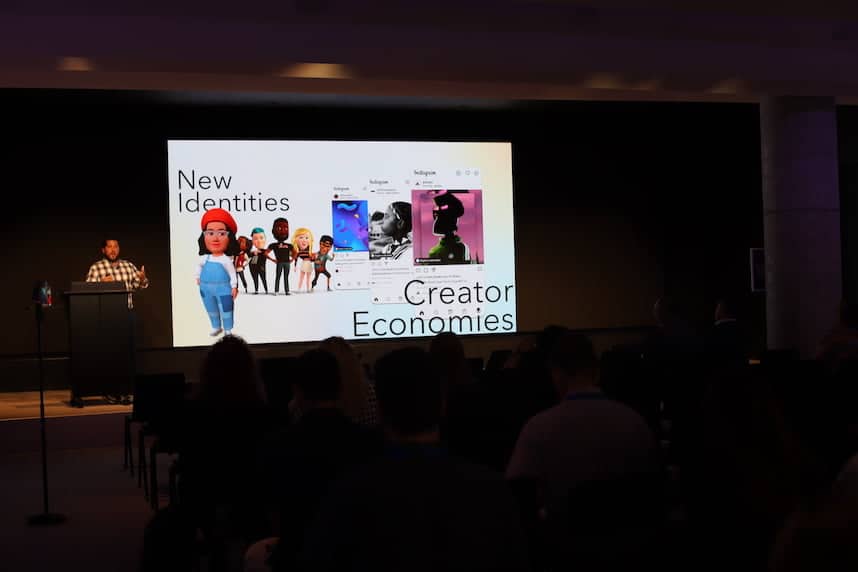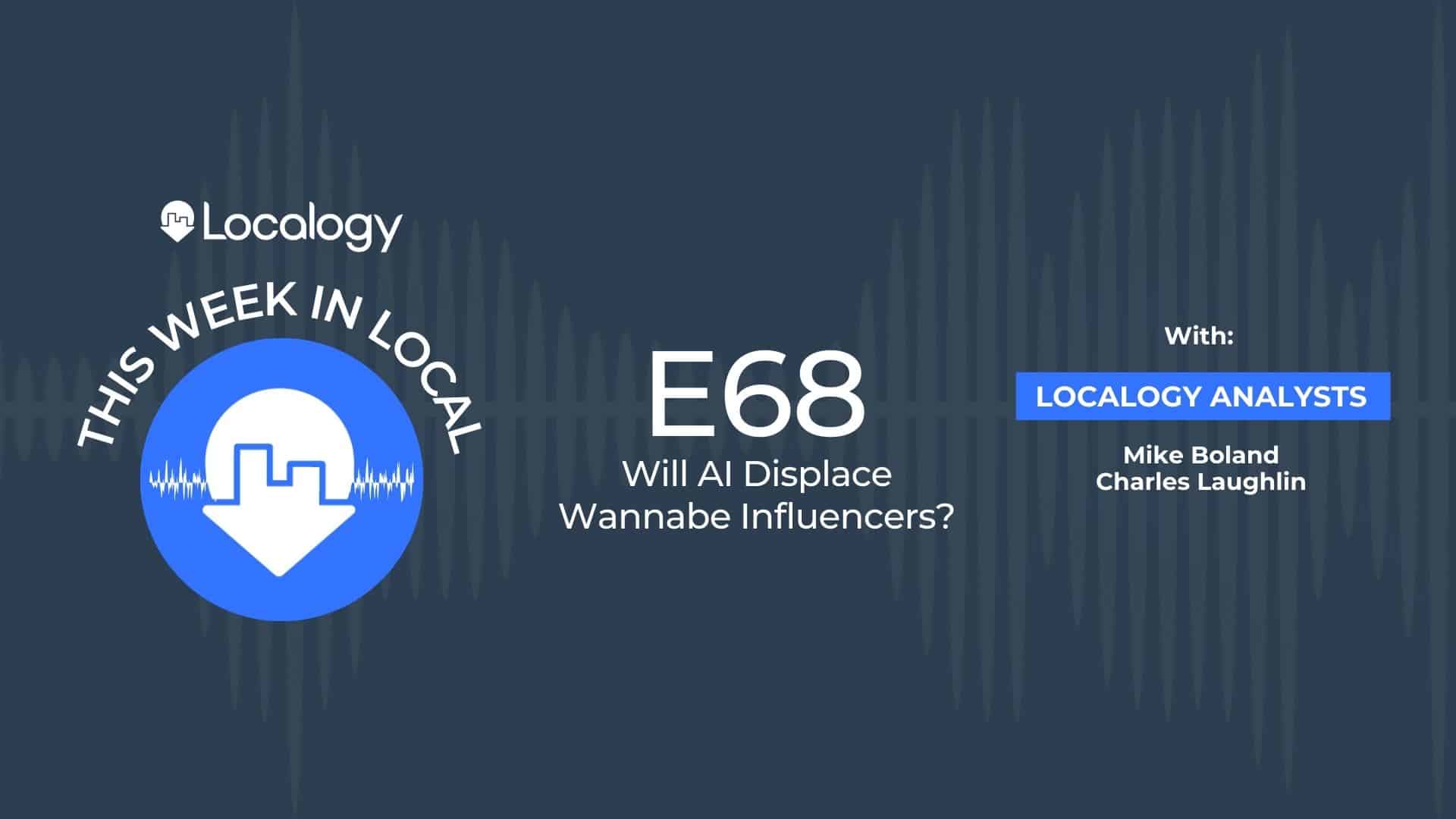The metaverse continues to be a runaway train of future-gazing and speculation in the tech press. But that’s not to say it’s a frivolous endeavor. There are legitimate discussions underway as a thought exercise for mapping out our connected future. That future may be a 3D rendition of today’s web.
This was a topic unraveled at Localogy’s recent Place conference, carrying the theme of “real-world metaverse.” Compared with its more online and immersive counterpart, this is a metaverse track that involves infusing depth and dimension to the physical world… a potentially more valuable outcome.
Meta has its eyes on both prizes, and is credited (for better or worse) in kickstarting the current wave of public interest in the m-word. That makes its vision – and capacity for execution – canonical amidst all the metaverse punditry. So Localogy naturally kicked off the Place conference with Meta itself.
Snchronous and Interactive
So what were the takeaways of Meta’s keynote? Global marketing solutions lead Matthew Christiansen walked us through the company’s vision and, more importantly, real results so far. The latter spans lots of deep research and innovation underway, but also some real case studies in brand marketing.
Most notable is Wendy’s forays into the metaverse via Meta’s Horizons Worlds. For those unfamiliar, this is Meta’s VR-based social, synchronous and interactive world. Users interact in 3D, and teleport to various virtual locales. And venturous brands are staking their claim as a customer engagement channel.
That brings us back to Wendy’s, which happens to be Christiansen’s former employer. It created a virtual space in Horizon Worlds where customers engage. That includes mini-games, social interaction, live concerts (in partnership with iHeart Radio), and even ordering food at the closest real-world Wendy’s.
Altogether, Wendy’s execution stands so far as a model for how brands should be thinking about the metaverse. Rather than getting carried away with selling virtual goods or treating it as a revenue center (as some brands are doing), it should simply be considered as an additive marketing channel.
In that way, the metaverse joins other media channels brands must consider and combine in their marketing mix to reach incremental audiences. And like those channels – search, social, mobile, etc. – it will have its own native playbook. The challenge is that the playbook hasn’t been fully written yet.
Security Blanket
For that reason, we’re seeing lots of experimentation. Among early success factors, native execution stands out. In other words, like the onset of social, mobile and other media, brands should lean into unique capabilities, rather than porting tactics and assets from legacy channels (sound familiar?).
One example is Wendy’s separate Fortnite campaign. It elegantly blended the game’s mechanics with its campaign. This was all about eschewing freezers in its restaurants to engender a culture of freshness. So its Fornite campaign gamified the act of smashing freezers with the game’s signature pick-axe.
Beyond execution and creative, another key question – again, carrying historical parallels – is native metrics. Like early days of mobile marketing, metaverse marketing will be ineffective if brands simply throw traditional metrics against it. We’re talking analytic security blankets like clicks and impressions.
But at the same time, brands need to benchmark against known quantities. So what’s a metaverse-curious brand marketer to do? Here, Wendy’s came up with several ways to translate its Horizon Worlds user engagements into traditional metrics so that it could normalize analytics across its media mix.
That last part isn’t necessarily new, as brands have been doing this for years given an ever-broadening media menu. The metaverse is just the latest channel. But one bit of advice from Christiansen: manage expectations around reach. This isn’t a high-reach medium yet and is more about engagement depth.
Meta Introduces “Third Screen” to Brand Marketers at Place 2022
Trailing Indicator
Lastly, though Wendy’s execution serves as a high-water mark, it’s a large brand entity with extensive marketing resources and budget. What about SMBs? To bring up yet another historical parallel, SMBs were a trailing indicator in previous media-mix expansions like mobile social and the web itself.
That phenomenon will be amplified in the metaverse as it has an even greater propensity for mass confusion among the average SMB. The short answer is that they won’t be proactively joining Horizon Worlds or Fortnite en masse… but there could be an opportunity to hold their hands and onboard them.
If that last part sounds familiar, it’s because it’s been the raison d’etre of SMB-focused digital agencies for years. Going back further, it was the role of traditional media publishers (with varying success). History will repeat with the metaverse. Though the players have changed, the game is the same.




